Menswear designers on gender norms, what modern masculinity represents, and why it is much more than a fist-pumping, ‘Boys, boys, boys…’
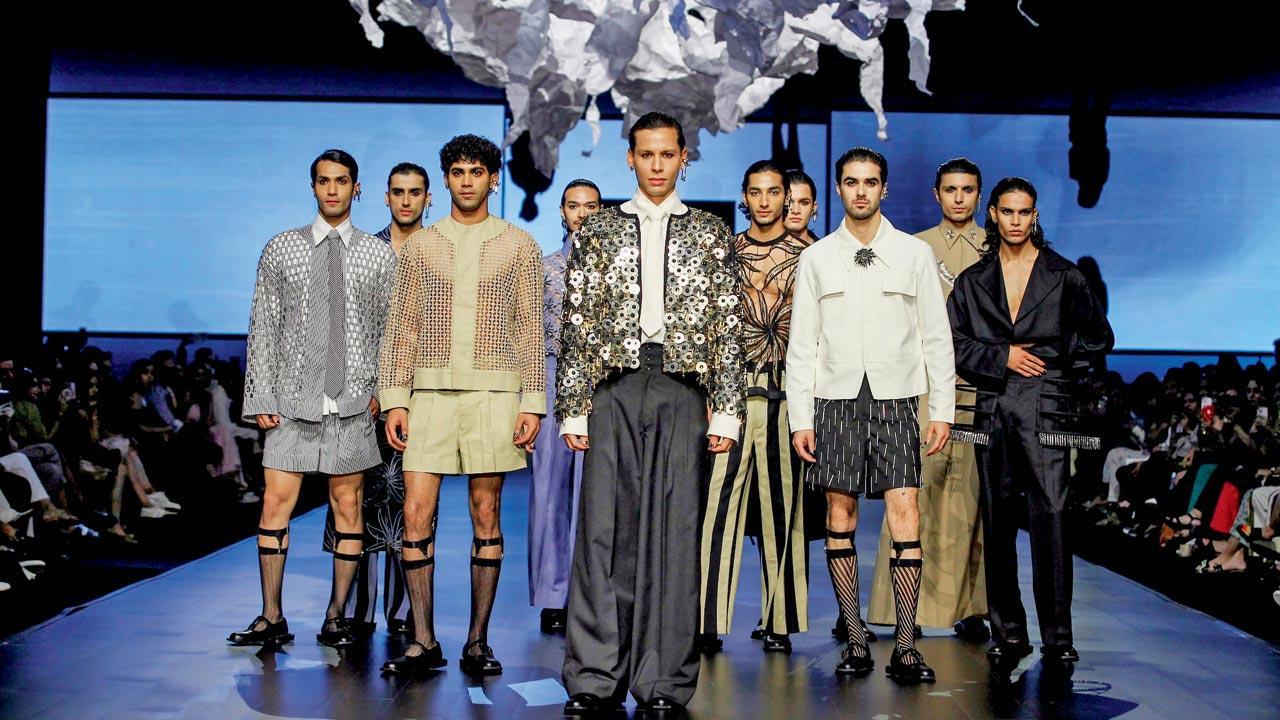
Rosani by Rohitash Notani debut show riffed on menswear with a genderfluid narrative, and with plenty of skin on show. Pic/Satej Shinde
 Something inside this man [in the audience] seems troubled if his manhood was affected by what he saw [on the runway]. How fragile is his masculinity?” This is Rohitash Notani responding to an audience response stating that his collection of ‘menswear with a gender fluid narrative’ was indeed, “Gaywear”.
Something inside this man [in the audience] seems troubled if his manhood was affected by what he saw [on the runway]. How fragile is his masculinity?” This is Rohitash Notani responding to an audience response stating that his collection of ‘menswear with a gender fluid narrative’ was indeed, “Gaywear”.
Notani is founder-creative director of the Rosani label, and he showcased a collection titled Anima & Animus, as part of the INIFD GenNext show at the just-concluded Lakme Fashion Week x Fashion Design Council of India (FDCI). The capsule range was remarkably free of the usual gender constraints, eliciting collective desire. One male model wore a Victorian-era feminine crinoline mini petticoat with metal hardware dangling over his trousers, and a couple of boys turned up in textured diaphanous shirts and blouses, with gator socks tucked inside their Mary Janes. He told mid-day, “The idea was to take a garment that traditionally denoted wholesome femininity [crinoline] and contrast it with today’s notion of masculinity, and deliberately blur boundaries between the two.” A liberal use of glass bugles, baguettes and rods on shirts and above-knee shorts accessorised with black nail-paint and chunky jewellery, widened the scope and appeal of men’s clothing. “Indian men have worn embroidered jackets and sherwanis. I wanted to pivot silhouettes and embellishments for the modern man who wants something a little more dashing than what he would find in the market.”
 Rohitash Notani
Rohitash Notani
A Wazir Advisors survey has indicated that the Indian menswear market is booming, having witnessed a transition from tailor-made to ready-to-wear, and with young male professionals driving the interest. Statista Market estimates that the men’s apparel market is currently valued at $31.10 billion, and is expected to see an annual growth of 3.93 per cent by 2028.
In Mumbai alone, customer tastes vary from one pin-code to the next. “I am okay if three out of 10 buyers get my point of view,” says Notani of his experience at the fashion week booth. “I noticed that the men were hanging outside [my booth] with their friends while their partners checked out my clothes. Male clients aged 20 to 30 ordered my stronger, versatile jackets and T-shirts. It is time, I feel, for fresh and relevant menswear options to be offered to a generation that hasn’t grown up on a diet of traditional male values.”
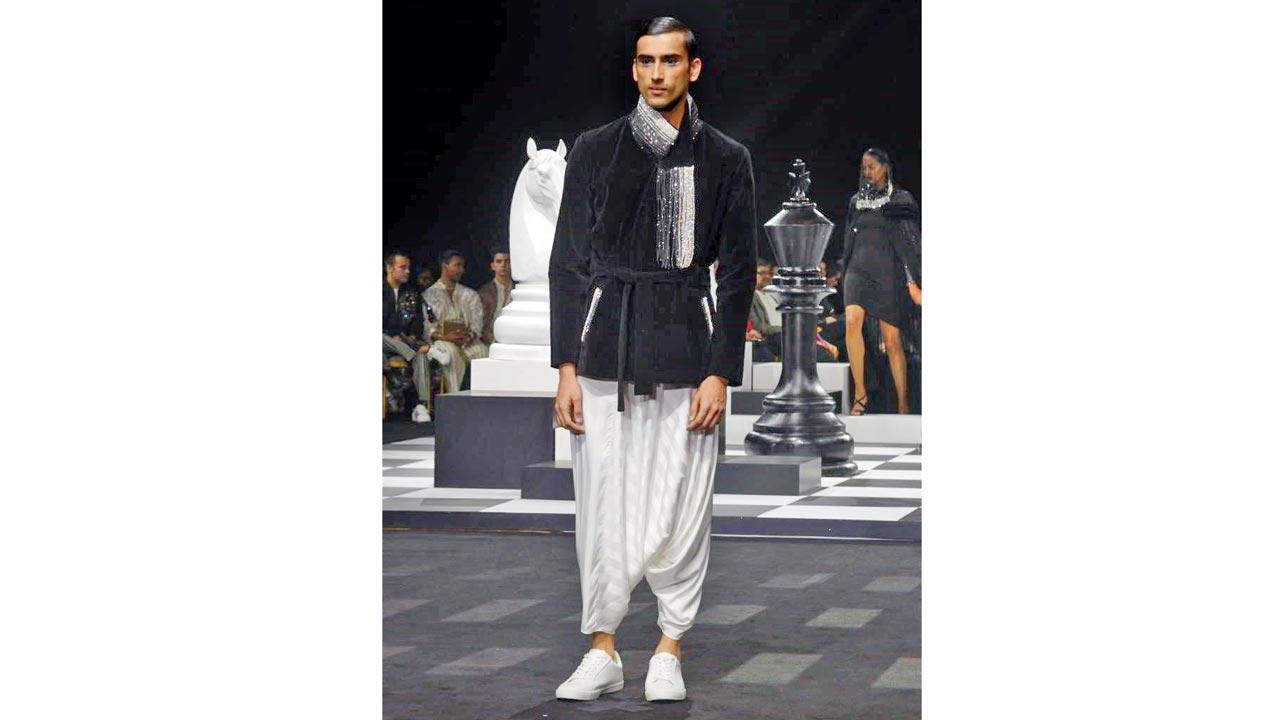
At Siddartha Tytler’s show, the focus was on overt glamour and self-assured sex appeal
Not just Notani. This season, quite a few designers seemed to be asking the zinger of a question: should we reset our relationship with masculinity? But rather than being smug or imposing, designers were determined to strip away the formality trapping menswear. “Masculinity is different from toxic masculinity; the latter is crap, only a façade,” Siddartha Tytler says. “Every man has a dual side, an alter ego. I cater to this client who is in touch with his feminine side too. What you see at my shows is what you will get at my store.”
Tytler’s ongoing interest in reviewing the macho ‘Marlboro Man’ archetype resulted in a spring/summer 2024 collection that symbolically replaced formal scarves with crystal-embellished drapes. The ho-hum shirt-trouser pair was replaced by versions of cargo trousers, skirts, high-rise flared trousers and dhotis. His penchant for overt glamour and self-assured sex appeal came through in the rani haar-style necklines and max ruffled shirts. “As a country, we love bling. But, somewhere down the line, our tastes turned commercial and static. It felt great [for me] to have fun with fashion this time. You come for drama at my shows, after all.”
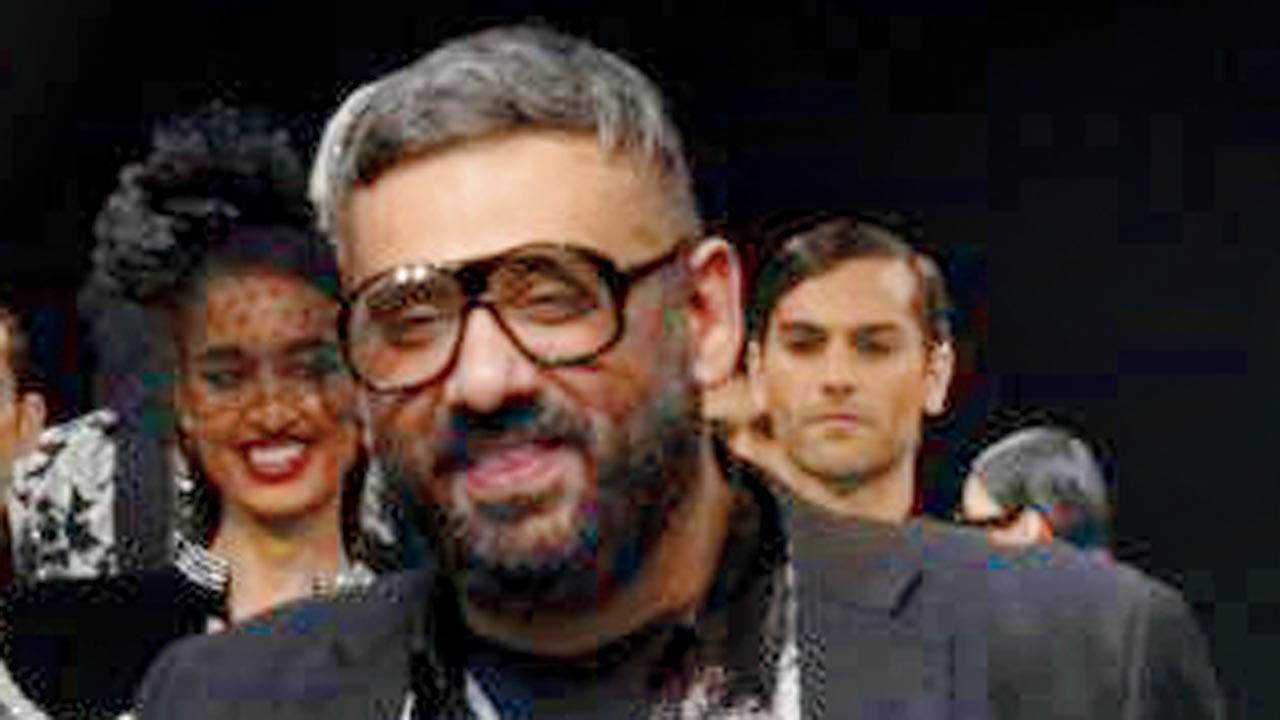 Siddhartha Tytler
Siddhartha Tytler
The topic of masculinity is one that draws multiple opinions. “F**** knows!” is Delhi-based designer Arjun Saluja’s response when we ask what is the modern idea of masculinity. “I think, at this point, the male is confused about how he can break through the Renaissance template of power, privilege and prestige, and still not lose his masculinity” he says.
When Saluja was conceiving Almost, his 16-piece collection for the GQ x FDCI Men’s Edit show, he dipped into a diverse group of emotions such as pain, bewilderment, vulnerability, angst… feelings that men reckon with while sticking to cruelly impossible standards of “act like a man”. “It was about questioning fragility in masculinity assimilated largely by socio-cultural upbringing, with the awareness that men will never crack them [emotions] fully.”
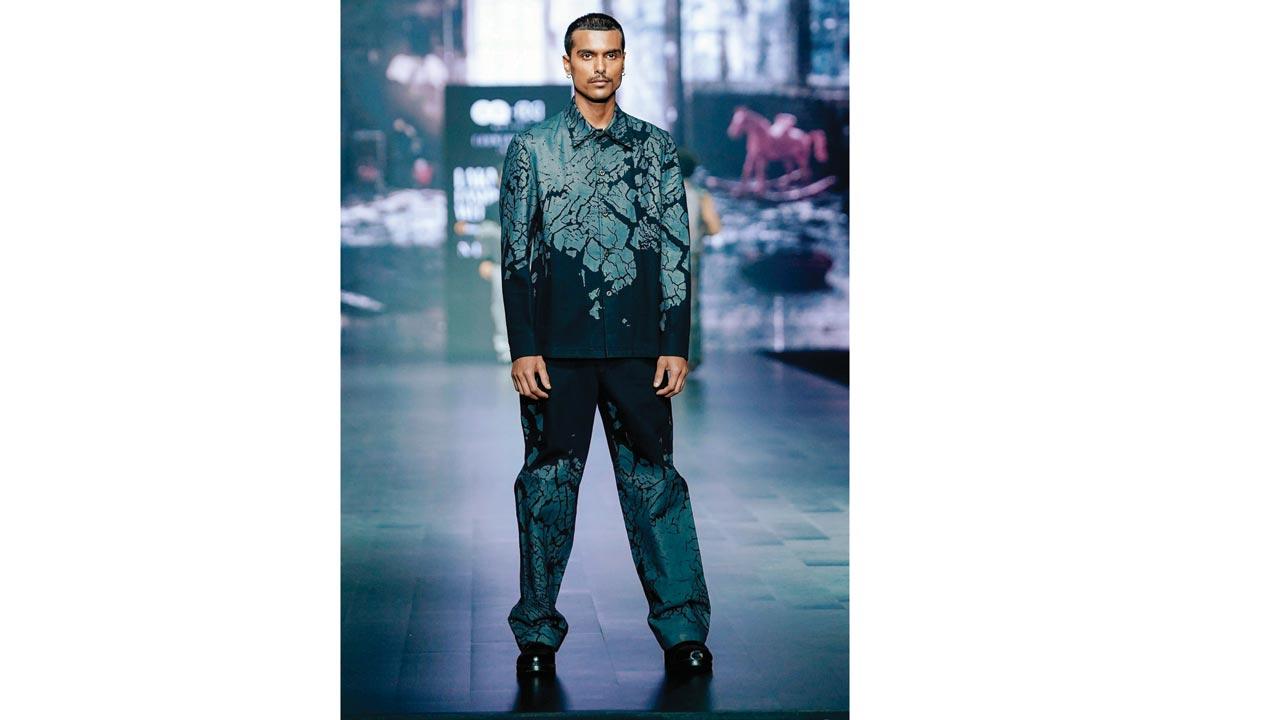 Sushant Abrol’s Countrymade collection challenged traditional ideas of masculinity with soft tailoring and textures inspired by old crockery and ceramics
Sushant Abrol’s Countrymade collection challenged traditional ideas of masculinity with soft tailoring and textures inspired by old crockery and ceramics
Saluja is a provocateur, and much of his collection was designed to unsettle. Shirts, kurtas, sherwanis, bundis and lungis were reimagined with a soft edge. It’s more difficult to change menswear, but Saluja’s transformations were sweeping exercises in volume and shapes, reducing or expanding, making generous allowance for the awesomeness of male curves. Is Saluja’s new man who wears vertiginous platforms with jewellery and slim sunglasses going the gender-fluid way? Of course not. Instead, he is going for a new male fashionista, spearheading a positive conversation about masculinity that is long overdue.
Sushant Abrol is a sensitive soul. He defines masculinity as empowering rather than imposing. This is evident in the way he thinks and designs for his menswear label, Countrymade. “I disagree when people say, ‘Bro, your brand is very alpha’. The emotion of longing and melancholy is what I love to see in garments.” His new collection, The Road Back, was yet another concoction of barbs and heart. “It was about a deeply personal journey of a boy returning to his abandoned family home, which is now a canvas of ruin and lost dreams. The show was a homage to the tangible and intangible relics I unearthed in this emotional excavation.”
 Sushant Abrol
Sushant Abrol
He calls upon the male buyer to open his mind to a less self-serious vibe and attitude. Longline trench coats and jackets, genial shirting, slim pantsuits and louche pleated trousers tabbed with handmade buttons and prints of old crockery and ceramics, were not just emotive, they were also performative. “I am a proper modern menswear brand built on classic wardrobe basics, not at all in the androgynous zone,” Abrol says, adding that his target audience includes professionals like architects, lawyers and doctors. His brand of “clean, clear and edited menswear” might appeal to hospitality entrepreneur and fitness enthusiast Suren Joshi, 41.
Joshi’s fashion extends to a pair of jeans and T-shirt, although he somewhat reluctantly admits to understanding the pressure that the modern man lives in. “Do I consider myself fashionable? Yes, but people might think I am an idiot. Actor Ranveer Singh dresses fashionably too, but again, some may think otherwise. Fashion is a personal choice.”
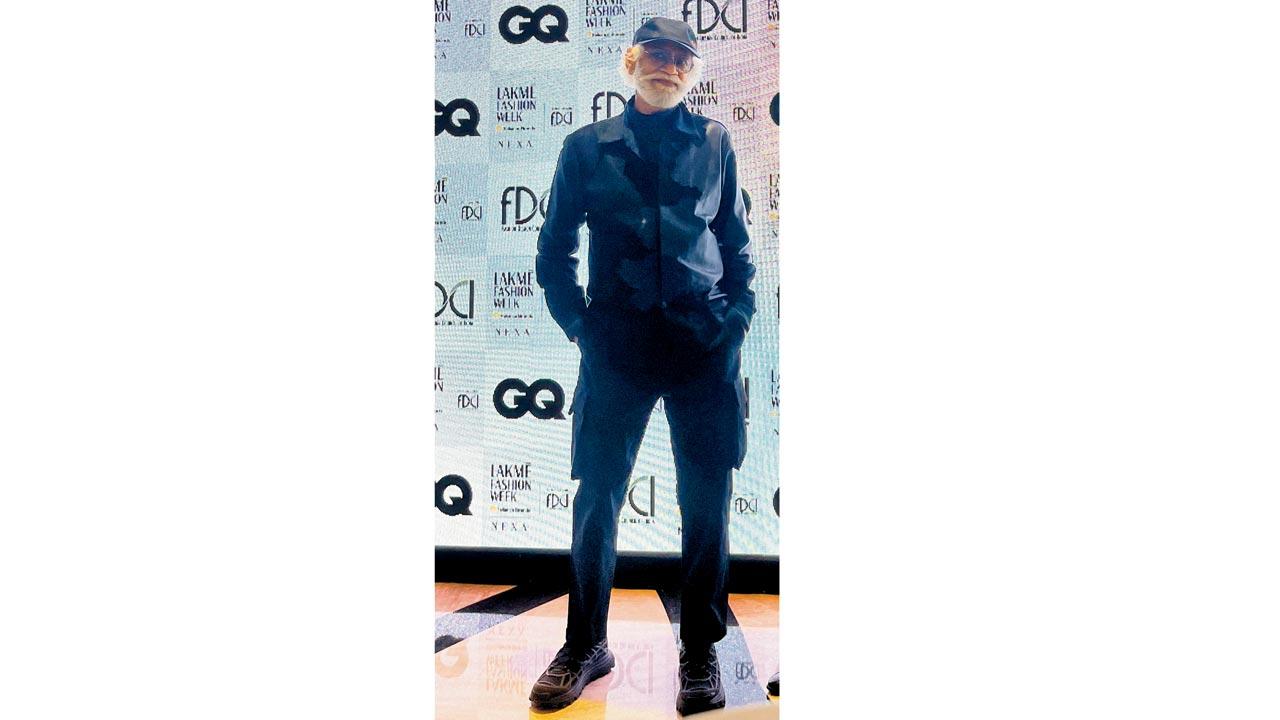 Sunil Sethi
Sunil Sethi
Joshi longs for a simpler world where differing points of view didn’t invite the call-out mob. “Who says that if you are masculine, you can’t be modern? Adding modern with masculine, in fact, makes things more complicated,” Joshi reasons.
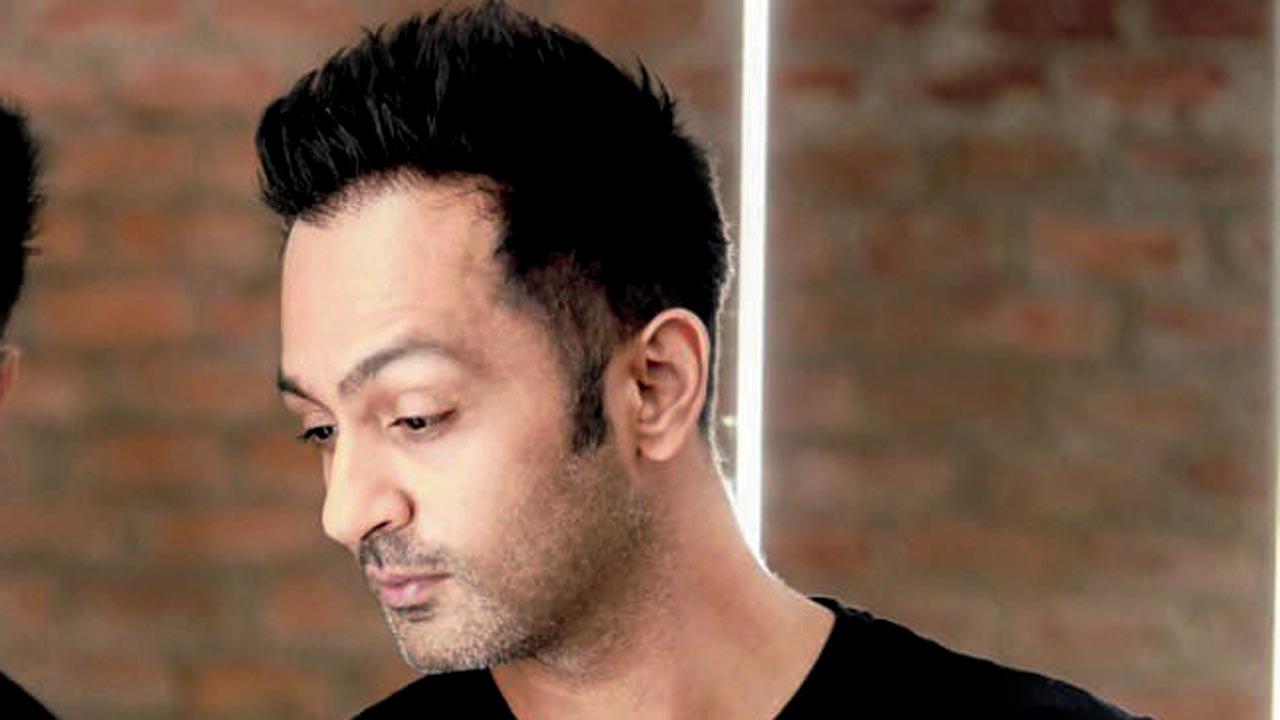 Suren Joshi
Suren Joshi
Back in 2009, FDCI’s longest-running president Sunil Sethi initiated a menswear fashion week in partnership with Van Heusen. But after a two-year run, the event was shelved since it didn’t evoke business or enthusiasm. “Unfortunately, the casual Western wear format didn’t work since bridal couture was dictating market terms,” Sethi says. “[Back then] Brides wanted to twin with the groom in matching burgundy lehenga and sherwani.”
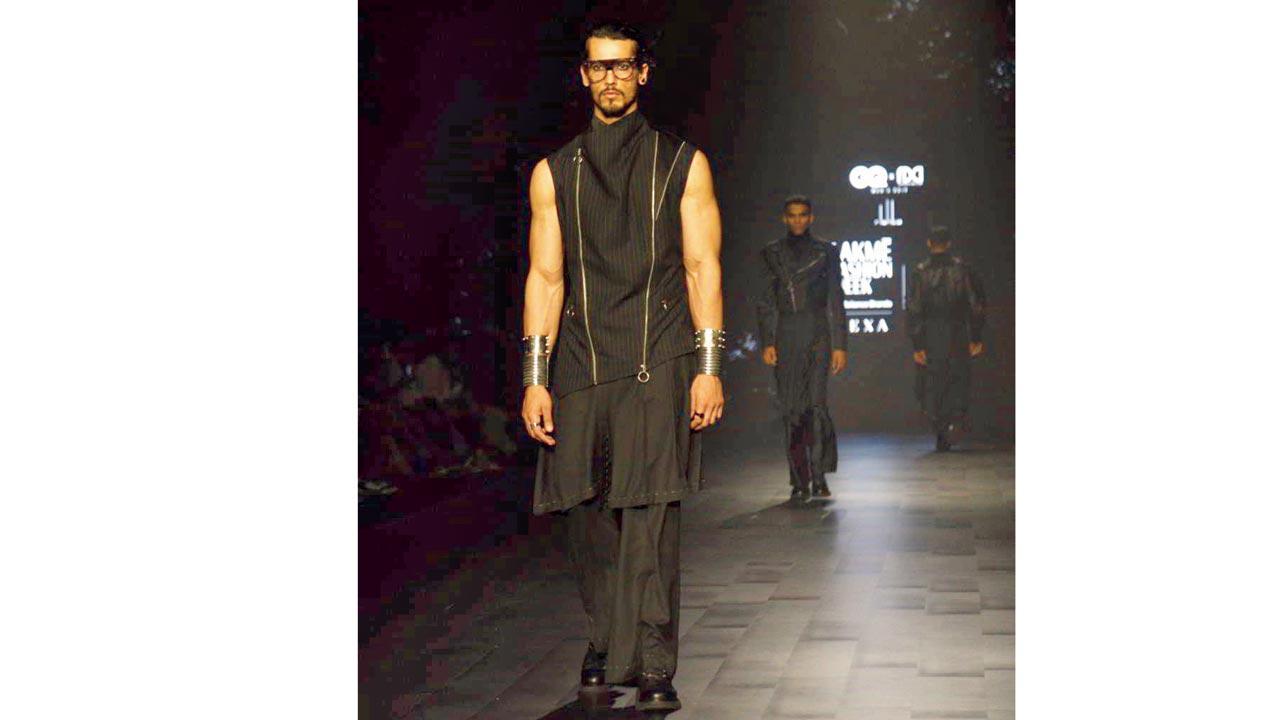 Arjun Saluja’s Rishta collection upended the menswear shapes and silhouette with a sweeping sense of volume and proportion
Arjun Saluja’s Rishta collection upended the menswear shapes and silhouette with a sweeping sense of volume and proportion
Now, with new audiences of Indian men experimenting more with their fashion choices, and brands like Antar Agni, Bloni, Khanijo, Line Outline and SNOB happily tapping into this market, Sethi thinks it is a good time to be a young menswear designer. “I have lost count of how this industry has progressed and become inclusive; I am happy to include and support younger designers.”
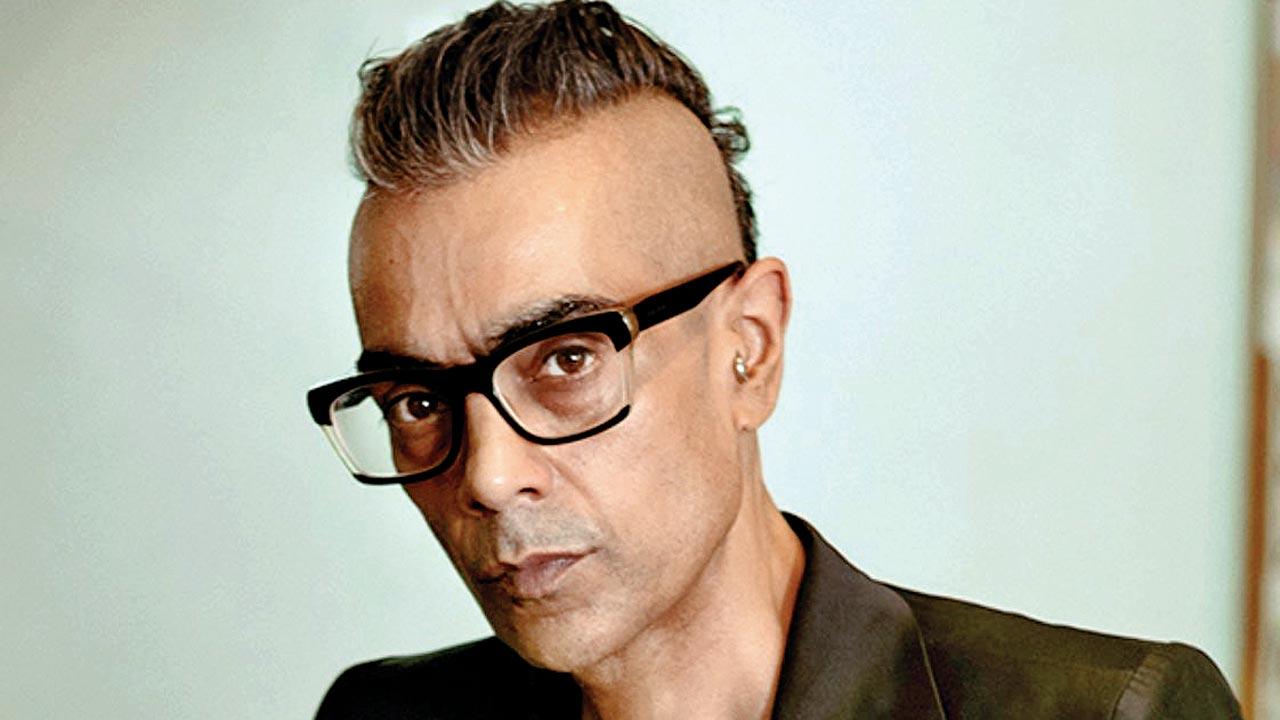 Arjun Saluja
Arjun Saluja
This is also a good time to introduce a menswear fashion week again. Sethi agrees. “Men are no longer averse to parading, peacock-like, while surrounded by other men. For the first time, I wore oversized cargo trousers and chunky boots at the GQ x FDCI show, and the trousers were such a hit that I quietly went and bought a pair.”
 Subscribe today by clicking the link and stay updated with the latest news!" Click here!
Subscribe today by clicking the link and stay updated with the latest news!" Click here!










